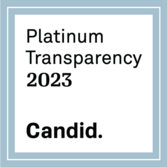12 Easy Steps for a Do-It-Yourself Beach Clean Up! (individual or small group)

- Dress for the weather including wearing sunscreen if sunny!
- Check the tide in your area (it is better to go about an hour after high tide)
- Wear hard-soled shoes like sneakers, not flip flops!
- Bring a bucket or more if you are in a group
- Wear gloves while cleaning the beach!
- Bring a pencil or more if you are in a group!
- Download and print the two-sided COA Beach Sweep Data Card (Note: it is 11 x 14 so if printing on 8.5 x 11 it will be smaller so you may want to bring more than one especially if your group is more that 3 people).
- Bring a clipboard or piece of card-board/pad of paper to support the Data Card making it easier to write on.
- Watch the “How to Tally Beach Data” to ensure it is complete and can be included for research. This is a very important step in the Beach Sweep process!
- Have fun!
- Once you have completed your DIY clean up, if possible, please take your buckets of trash home to properly recycle/dispose of the debris. If using local municipal trash bins, place trash inside a bin with a lid or securely tie off your bags.
- Lastly, and importantly, please mail your data cards to our office address and send any photos to communications@cleanoceanaction.org
If you are looking to get volunteer hour credit for this event, please attach a note with your data card that includes your name and contact information.
Step-by-Step Instructions for Organizing a Group Cleanup
We hope that you will join us for our Beach Sweeps each Spring and Fall. However, if you are not available to particpate on the days we have chosen, or if you don't live in New Jersey, we encourage you to organize your own cleanup. Here are simple instructions for organizing your own event. Good luck!
1. Form a plan of action.
Choose the water body or area you want to clean up. Pick the cleanup date (and rain date, if applicable). Make a list of supplies, materials and services you will need:
- For the cleanup itself, you will need: trash bags, gloves, pencils and data cards for data collection. A sample data card is available here. Feel free to create your own data card, but be sure to use it. Anyone can pick up trash, but collecting data about what kind of debris you find is the only way to identify the possible sources of debris, understand the magnitude of the problem, and educate others about it.
- You will also need materials to create your advertisements such as paper, a computer and printer or markers.
- You may also need a garbage/recycling pickup service for debris collected (depending on how much you collect, which may be determined by how big your cleanup site is or how dirty it is).
Brainstorm and choose methods for getting your supplies. Different methods include: fund raising events, asking for donations (money or supplies) or sponsorship by local businesses, asking your local government or county government to donate them, or purchasing them yourself.
Think about whom you want to involve. Is the cleanup a “private” event for your own group, or do you want to invite the public? What are the other groups in your area that may want to be involved? Schools, churches, scout groups and community service organizations, such as Rotary or Kiwanis, are good sources of volunteers.
2. Seek permission for your cleanup.
Send a letter to the appropriate authority to obtain permission for the cleanup. Ask them to send you a written letter of permission that also confirms the time, date and location of the cleanup.
- If the cleanup site is on public land, you must ask the local, county or state government (whomever manages it) for permission to access it and clean it.
- If the cleanup site is on private land, you must ask the property owner(s) for permission to access it and clean it.
- If the cleanup site is within a park, seek permission from the administrative office of the park.
A sample letter of permission is available here.
After permission is granted, you must arrange for pickup of the garbage and recyclables that you collect. Find out how the town or property owner wants the debris sorted (ie: black bags for trash, clear bags for recycling) and what kind of materials they separate for recycling.
- On public land, ask the municipal or county government’s Public Works department or Solid Waste department to collect the debris. You can find their phone number in the blue pages of the phone book, or you can stop by town hall to ask in person.
- On private land, ask the landowner to dispose the debris. Large quantities of debris may not be collected for free with regular household garbage/recycling collection, so research the threshold of how much debris you can dispose through the landowner. If you anticipate collecting more than they will take, call a private solid waste company and ask them to donate the cost of disposal. If they will not, ask a sponsor to cover the cost or fundraiser for it separately.
- In a park, ask the maintenance department to collect the debris. You can find their phone number in the blue pages of the phone book, or you can stop by the park’s administrative office to ask in person.
Additionally, you should contact your local Health Department to discuss the potential hazardous materials (i.e.: dead animals, hypodermic needles) you may encounter during your cleanup. Find out how to handle and dispose these items in the event that you come across them. Designate a “Hazardous Materials” contact in your group to collect the items and handle them as prescribed by the Health Department. You can find the Health Department’s phone number in the blue pages of your phone book.
3. Request support or sponsorship of your cleanup.
Write and send a letter to the appropriate contact person (i.e.: President, Manager) explaining the purpose of the cleanup and asking for the needed supplies or donation. A sample letter for assistance is available here. Offer the sponsor advertising opportunities on event posters and in press releases. Follow up with a phone call.
Be sure to keep careful notes on all donor details (contact name, address, phone number, fax number, donation amount or supply donated) so that you can properly recognize and thank them after the cleanup.
4. Advertise the event.
Create and post flyers in the area of the cleanup. Be sure to include sponsors of the cleanup on the flyer as agreed upon with the sponsor. Post flyers in local restaurants, supermarkets, stores, hotels, marinas, fishing/boating shops, schools, churches, libraries, town hall and the post office. If your town has a community bulletin board, advertise your cleanup there as well.
Invite elected officials. Send letters of invitation to the mayor and council, county freeholders, state and federal congressmen and representatives, and any other pertinent elected officials.
Send a media advisory to local press outlets (i.e.: television, radio, internet, newspaper) two to five days prior to the event to invite them to both advertise the event and attend the cleanup. Follow up with a phone call to confirm receipt of the advisory and to find out who can attend the cleanup to cover it. A sample media advisory is available here.
Advertise in a local community calendar or other publication.
Write a press release to distribute to members of the media when they arrive at your cleanup. Be sure to mention the sponsors/donors that helped make the cleanup possible. Also include the names of any elected officials who have confirmed their attendance. A sample pre-event press release is available here.
5. Conduct your cleanup.
Arrive at the site ½ hour prior to the event to set up. Create a sign-in sheet for volunteers to give you their contact information such as name, phone number, address and e-mail address.
Distribute garbage bags, gloves, data cards, pencils and any other materials or supplies you have to the volunteers as they arrive. Be sure to explain the importance of filling out the data cards accurately so that you can have a good idea of the amount and type of debris that is plaguing your waterway or beach.
Instruct volunteers not to touch any potentially hazardous materials such as dead animals or hypodermic needles. Someone from your group should be designated ahead of time to collect hazardous materials, using adequate protective strategies to protect their own health. Contact the local health department ahead of the cleanup to find out how to handle and dispose those items if they are found.
6. Follow up.
Tally the results of all of your data cards onto one Master Data Card. Submit your data to an organization that collects it such as Clean Ocean Action or The Ocean Conservancy.
Send out a post-event press release with photos of the cleanup and a copy of the Master Data Card to local media outlets. Follow up with a phone call to confirm receipt of the release, photos and Master Data Card. A sample post-event press release is available here.
Write a letter to the editor in local newspapers to publicly thank all supporters, donors and participants in the cleanup.
Send thank-you letters to all sponsors/donors and the party that granted you permission to do the cleanup. Enclose a copy of the Master Data Card with your letter.
Have a party and celebrate your success! Don't forget the lessons you've learned from the cleanup - avoid disposable food packaging and items as much as possible. Recycle everything you can, and reuse any items that could be put to a new use.

